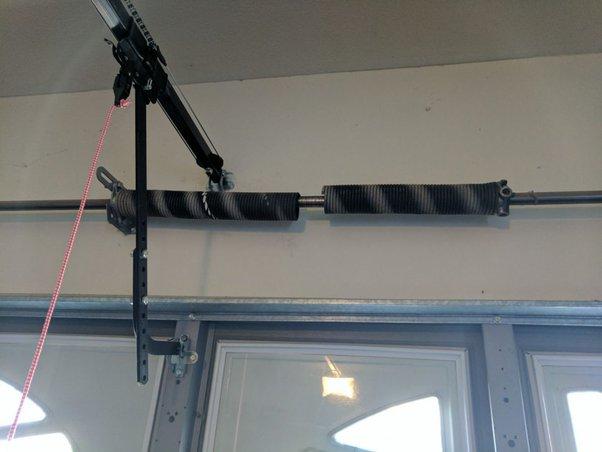Garage doors are an essential part of our homes, providing convenience and security. However, behind the seemingly simple task of opening and closing lies a crucial component that often goes unnoticed: garage door springs. These springs play a vital role in the smooth operation of your garage door, but they can also pose significant dangers if not properly understood and maintained. In this article, we’ll delve into the potential hazards associated with garage door springs and provide valuable insights on how to stay safe and secure.

Section 1: Understanding Garage Door Springs
To grasp the risks involved, it’s essential to understand the different types of garage door springs commonly used. The two main types are torsion springs and extension springs. Torsion springs are mounted horizontally above the door, while extension springs are typically located above the horizontal tracks on either side of the door. These springs store mechanical energy, which is released to counterbalance the weight of the garage door, allowing for controlled movement.
Section 2: Potential Hazards and Risks
Garage door springs are under high tension and can exert tremendous force. When a spring malfunctions or fails due to wear and tear, rust, improper maintenance, or poor installation, the consequences can be disastrous. The sudden release of tension can cause the spring to snap or break, leading to severe injuries. Broken bones, lacerations, and pinched fingers are among the potential injuries that can occur. Unfortunately, accidents involving garage door springs have happened all too often, resulting in personal harm and property damage.
Consider the case of Mr. Johnson, who experienced a garage door spring failure. As he was attempting to manually open the garage door, the worn-out spring suddenly gave way, causing the door to slam shut unexpectedly. The forceful impact not only caused significant damage to his vehicle but also left him with a broken arm. This incident serves as a stark reminder of the dangers lurking within our garage door systems.
Section 3: Signs of Faulty Garage Door Springs
Knowing the signs of faulty garage door springs is crucial for proactive maintenance and prevention of accidents. Keep an eye out for visible wear on the springs, such as rust, cracks, or deformation. Unusual noises during operation, an imbalanced door, or difficulty in opening and closing can also indicate spring problems. Performing a basic visual inspection by carefully examining the springs can help identify any signs of wear or damage. If you notice any issues, it’s important to seek professional assistance promptly.
Section 4: Preventive Measures and Maintenance
Preventing accidents related to garage door springs starts with regular maintenance and care. By following a few simple guidelines, you can keep your springs in optimal condition and reduce the risk of failures. Regularly inspect the springs for wear, and if you spot any signs of damage, contact a professional for repair or replacement. Lubrication is essential to minimize friction and ensure smooth operation, so make sure to apply a silicone-based lubricant to the springs and other moving parts. Additionally, keep the tracks clean and free from debris to prevent any hindrance to the door’s movement.
To help you stay on top of maintenance tasks, here’s a handy checklist:
- Inspect the springs regularly for wear and tear.
- Lubricate the springs and other moving parts at least twice a year.
- Clean the tracks to ensure smooth operation.
- Test the door’s balance periodically.
Section 5: Seeking Professional Help
When it comes to garage door springs, it’s essential to prioritize safety and seek professional help for any repair or replacement needs. Attempting to fix or replace springs yourself can lead to serious accidents and injuries. Qualified garage door technicians have the knowledge, experience, and proper tools to handle spring-related issues safely and effectively. When choosing a service provider, look for reputable companies with a track record of excellence. Don’t hesitate to ask questions about their certifications, warranties, and customer reviews.
Conclusion
Understanding the dangers associated with garage door springs is key to ensuring the safety of yourself, your loved ones, and your property. By familiarizing yourself with the types of springs, recognizing signs of wear or damage, and prioritizing regular maintenance, you can minimize the risks and enjoy the convenience and security that a garage door provides. Remember, when it comes to garage door springs, it’s better to be proactive and seek professional help when needed. Stay safe and secure by keeping your garage door springs in good working order.



Leave a Reply